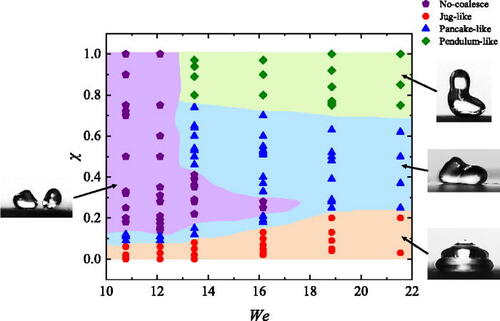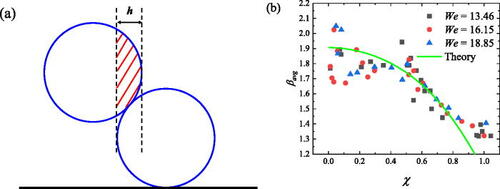Digital microfluidic is a key enabling technology in lab-on-a-chip, micro-total analysis systems and point-of-care diagnostic devices, and has gradually become an independent and emerging research discipline in recent years. From the point of view of mechanics, the competitive relationship among surface tension, inertial force, viscous force and fluid-solid viscous force is the key scientific issue affecting the dynamics of microfluidics. Clarifying the mechanical relationships in microfluidics will establish a bottom-up research path, which will help to fundamentally improve the efficiency of microfluidics and guide the design of more efficient and robust surface microstructures.
Recently, Yu Wenlong, a 2019 undergraduate student, Zhu Dong, a 2018 undergraduate student, and Wang Wenhao, a 2021 graduate student, under the guidance of our school’s young assistant professor Zhao Jiayi, have published a paper in Applied Physics Letters, the top international physics journal with Impact Factor of 4.20. The published paper's title is "The rebounding-coalescing behaviors in drop-on-drop impact on a superhydrophobic surface". Based on experiments, this paper divides the jug-like, pancake-like and pendulum-like shapes after the fusion of two droplets from the two-dimensional parameter space composed of Weber number and eccentricity. Three basic rebound behavior regions were used, and the formation mechanism and characteristics were analyzed by using the left and right spreading radius. At the same time, the quantitative theoretical model of the average maximum spreading radius, Weber number and eccentricity based on the principle of momentum conservation is established and verified. The research results have important academic significance and practical value for understanding the self-cleaning, anti-icing, anti-corrosion mechanism and application of superhydrophobic surfaces. This work was supported by the National Natural Science Foundation of China (Grant Nos. 12002212 and 11872283) and the Shanghai Sailing Program (Grant No. 20YF1432800).

Figure 1:The regime map of the rebounding state in drop-on-drop impacts and the corresponding snapshots of the droplet.

Figure 2: (a) The schematic of the momentum transfer in the drop-on-drop impacts. (b) The relation between the maxima of the averaged spreading radius of the coalesced droplet βavg and under We = 13.46, 16.15, and 18.85.
Paper Link: https://doi.org/10.1063/5.0101755

